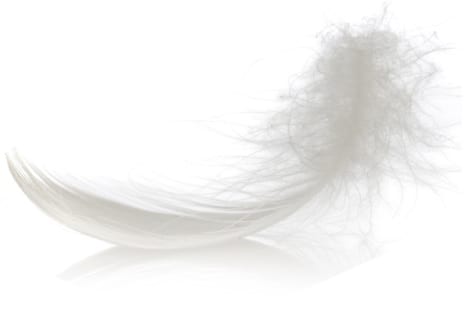Find the Perfect Goose Down Duvet
Step 1 – Duvet Size
The first step in choosing your dream down duvet is to determine the duvet size that suits you best. Do you have a single, double, king, super king, or emperor sized bed? If you’re unsure, use this chart to find out which size duvet will best fit your bed:
| Duvet Size | Imperial (inches) | Metric (cm) |
|---|---|---|
| Single | 54 x 79 | 135 x 200 |
| Double | 79 x 79 | 200 x 200 |
| King | 91 x 87 | 230 x 220 |
| Super King | 102 x 87 | 260 x 220 |
| Emperor | 114 x 92 | 290 x 235 |
For a double bed, we suggest a duvet that covers the entire width of your mattress, plus a few additional centimetres. If you are unsure which size is right, choose one that is wide enough to keep you well covered at night.
Are you interested in additional information on duvet sizes?
 Two single duvets or a double duvet?
Two single duvets or a double duvet?
Step 2 – Tog Rating
How warm is your ideal duvet? Every down duvet has a tog rating, a measure of its insulating power. The higher the tog rating, the warmer the duvet.
In the UK duvets are sold in increments of 1.5 tog, from 3.0 tog for a very light, summery duvet, up to 18.0 tog for a heavy winter duvet. The given values represent a minimum and actual values may be up to 3.0 tog higher. This is because tog testing is performed in a lab, and fitting a duvet with a cover and wearing nightclothes can effectively increase the tog rating.
There are several personal factors to consider when determining the ideal tog rating of your new duvet, such as the climate where you live, your house’s heating system and whether you generally feel hot or cold at night.
To learn more about which tog rating is best suited to your needs, visit our Choosing the Right Tog page for more information.
Many people choose to have two duvets at home —a light duvet for use in summer and a thicker one for the cold winter months. If storage or budget limitations restrict you to owning one duvet, we suggest choosing a Spring/Autumn duvet which provides the best of both worlds and can be used year-round.
Tog values on Downduvet.co.uk range from 4.5 tog to 15.0 tog. Once you have an idea of your preferred tog rating, browse our duvets accordingly:
- 4.5 Tog: Summer duvet
- 6.0 Tog: SummerPlus duvet
- 9.0 Tog: Spring/Autumn duvet
- 12.0 Tog: Winter duvet
- 15.0 Tog: WinterPlus duvet
- Combined: All Seasons duvet
Step 3 – Fill Power
The higher the quality of the down, the more insulating the duvet. The quality of down is determined by its size and elasticity.
We have found that most people want a duvet which is light but will still keep them warm. Down offers more insulation while taking up less space than feathers or alternative fillings, making it the perfect material for light, warm duvets. For this reason all of our duvets contain at least 90% down.
Learn more about how we measure the quality of our goose down duvets by reading about fill power and down varieties.
 Feathers don’t insulate as much as down clusters, but feel heavier
Feathers don’t insulate as much as down clusters, but feel heavier
Step 4 – Fabric Quality
The outer layer of a duvet is the fabric which encases the down filling. Good fabric has to be strong and tight so that dust doesn’t get in and feathers don’t stick out, while remaining soft and supple to ensure comfort and provide a great night’s sleep.
Cotton is the most commonly used material for down duvets. Close-woven cotton allows for ventilation while keeping the filling secure.
We measure the quality of duvet fabric in Ne. An Ne value of 1 means that there are 840 yards of yarn in every pound; as the Ne value increases, the number of yards per pound of yarn increases proportionally. The denser the fabric’s threading, the higher its Ne value and the more comfortable the duvet. In the interest of selling only the highest quality products, we only offer down duvets with fabric of at least Ne 60.
Learn more about fabric and how its quality is measured.
We hope you have found this down duvet guide useful. You can browse our full range of duvets and filter according to your preferred size, tog rating, fill power and fabric quality here!